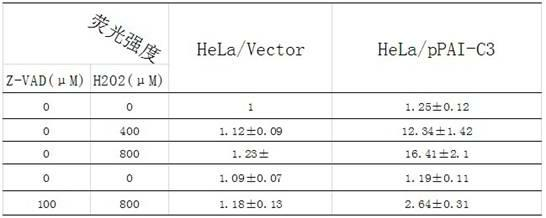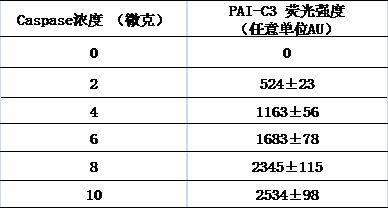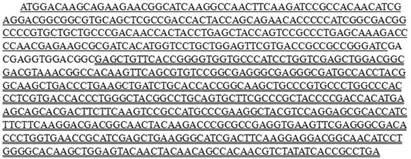Preparation method and application method for indicator for monitoring activity of protease in real time
A technology of proteolytic enzymes and real-time monitoring, applied in biochemical equipment and methods, chemical instruments and methods, microbial measurement/inspection, etc., can solve the problems of not providing an experimental tool
- Summary
- Abstract
- Description
- Claims
- Application Information
AI Technical Summary
Problems solved by technology
Method used
Image
Examples
Embodiment 1
[0036] Example 1: Taking the key enzyme caspase-3 in apoptosis as an example to illustrate the monitoring of this proteolytic enzyme, Caspase-3 plays an important role in apoptosis, and can be monitored conveniently and in real time by the method we describe The specific operation of Caspase-3 activity in cells is as follows (the fluorescent protein used in this example is Venus):
[0037] (1) Construct plasmid:
[0038] (a) The free N-terminal and C-terminal of the fluorescent protein are shortened by molecular biology techniques to ensure a shorter sequence for the function of the fluorescent protein;
[0039] (b) Cut it between 154 and 155 of the fluorescent protein to form two parts, N-terminal and C-terminal;
[0040] (c) Connect the original and shortened N-terminal and C-terminal, and insert the recognition site DEVD-G (Asp, Glu, Val, Asp, Gly) of caspase-3 at the same time, which is PAI;
[0041] (d) Link the cDNA expressing the protein (PAI) to a sui...
Embodiment 2
[0052] Example 2: Purify PAI-C3 containing Caspase-3 hydrolysis site (DEVDG, amino acid sequence) as the substrate of Caspase-3, mix Caspase-3 sample and PAI-3 substrate in the reaction system, and detect the reaction system The fluorescence intensity in the sample can be used to know the activity of Caspase-3 in the sample, and the results are shown in Table 2.
[0053] Table 2: In vitro detection of Caspase-3 activity using PAI-C3 as substrate
[0054]
[0055] PAI-C3 was transformed with Venus fluorescent protein (a yellow fluorescent protein) as a template; the reaction system was 2 ml of phosphate buffer (pH7.5); in the calculation of fluorescence intensity, all background fluorescence was deducted, and the unit was an arbitrary value; the result It shows that the fluorescence intensity of PAI-C3 is directly proportional to the amount of Caspase, indicating that the activity of Caspase-3 can be detected very accurately with PAI-C3 as the substrate.
Embodiment 3
[0056] Example 3: Insert HIV-1 Protease hydrolase recognition sequence Ser-Gln-Asn-Tyr-Pro-Val-Val into PAI (using Venus as a template), express and purify the protein PAI-HP in a bacterial system; PAI -HP was used as the substrate of HIV-1 Protease to detect its activity; the results are shown in Table 3.
[0057] Table 3: Monitoring the activity of HIV-1 Protease with PAI-HP as substrate
[0058]
[0059]The fluorescence intensity of the substrate PAI-HP is directly proportional to the amount of HIV-1 Protease in the reaction system, showing that the fluorescence intensity of PAI-HP can truly reflect the activity of HIV-1 Protease; ) plays an important role when invading the host, and inhibiting the activity of HIV-1 Protease can prevent the reproduction of HIV virus. Therefore, inhibitors of HIV-1 Protease can be used as important drugs for the treatment of AIDS; using PAI-HP as a substrate can facilitate A high-throughput screening platform for HIV-1 protease inhibitor...
PUM
 Login to View More
Login to View More Abstract
Description
Claims
Application Information
 Login to View More
Login to View More - R&D
- Intellectual Property
- Life Sciences
- Materials
- Tech Scout
- Unparalleled Data Quality
- Higher Quality Content
- 60% Fewer Hallucinations
Browse by: Latest US Patents, China's latest patents, Technical Efficacy Thesaurus, Application Domain, Technology Topic, Popular Technical Reports.
© 2025 PatSnap. All rights reserved.Legal|Privacy policy|Modern Slavery Act Transparency Statement|Sitemap|About US| Contact US: help@patsnap.com



